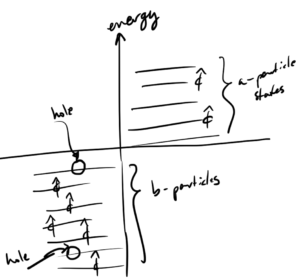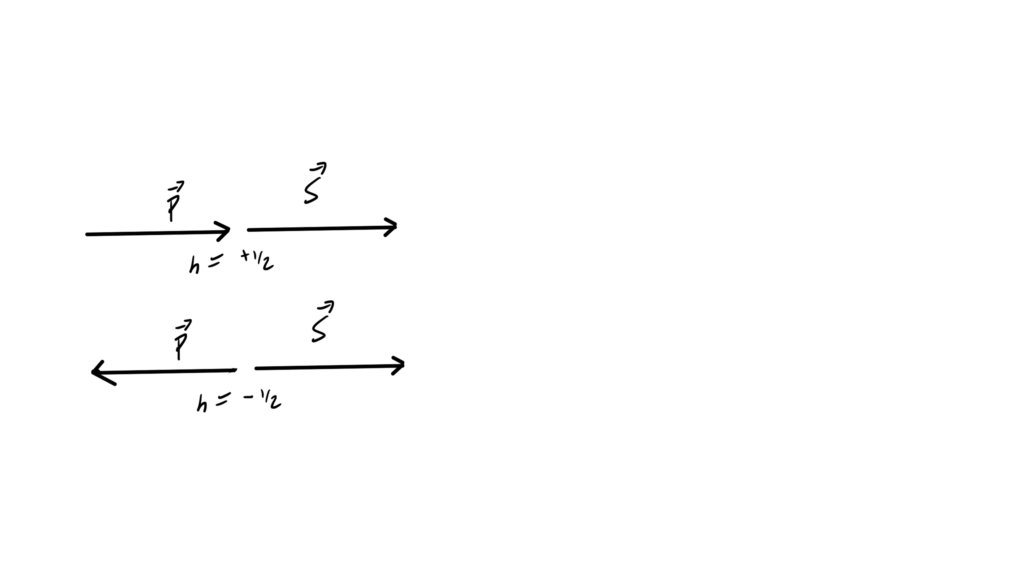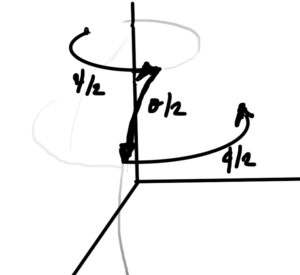I’ve now uploaded a new version of my class notes for PHY2403, the UofT Quantum Field Theory I course, taught this year by Prof. Erich Poppitz.
This version includes the following content. Fermion related content is new since the last upload, as well as some work to make the scattering content (lecture 17,18) somewhat sensible (it was in it’s raw post-class form before, which made little sense)
- Chapter 1: Fields, units, and scales.
- 1.1: What is a field?
- 1.2: Scales.
- 1.3: Natural units.
- 1.4: Gravity.
- 1.5: Cross section.
- 1.6: Problems.
- Chapter 2: Lorentz transformations.
- 2.1: Lorentz transformations.
- 2.2: Determinant of Lorentz transformations.
- 2.3: Problems.
- Chapter 3: Classical field theory.
- 3.1: Field theory.
- 3.2: Actions.
- 3.3: Principles determining the form of the action.
- 3.4: Principles (cont.)
- 3.5: Least action principle.
- 3.6: Problems.
- Chapter 4: Canonical quantization, Klein-Gordon equation, SHOs, momentum space representation, raising and lowering operators.
- 4.1: Canonical quantization.
- 4.2: Canonical quantization (cont.)
- 4.3: Momentum space representation.
- 4.4: Quantization of Field Theory.
- 4.5: Free Hamiltonian.
- 4.6: QM SHO review.
- 4.7: Discussion.
- 4.8: Problems.
- Chapter 5: Symmetries.
- 5.1: Switching gears: Symmetries.
- 5.2: Symmetries.
- 5.3: Spacetime translation.
- 5.4: 1st Noether theorem.
- 5.5: Unitary operators.
- 5.6: Continuous symmetries.
- 5.7: Classical scalar theory.
- 5.8: Last time.
- 5.9: Examples of symmetries.
- 5.10: Scale invariance.
- 5.11: Lorentz invariance.
- 5.12: Problems.
- Chapter 6: Lorentz boosts, generators, Lorentz invariance, microcausality.
- 6.1: Lorentz transform symmetries.
- 6.2: Transformation of momentum states.
- 6.3: Relativistic normalization.
- 6.4: Spacelike surfaces.
- 6.5: Condition on microcausality.
- Chapter 7: External sources
- 7.1: Harmonic oscillator.
- 7.2: Field theory (where we are going).
- 7.3: Green’s functions for the forced Klein-Gordon equation.
- 7.4: Pole shifting.
- 7.5: Matrix element representation of the Wightman function.
- 7.6: Retarded Green’s function.
- 7.7: Review: “particle creation problem”.
- 7.8: Digression: coherent states.
- 7.9: Problems.
- Chapter 8: Perturbation theory.
- 8.1: Feynman’s Green’s function
- 8.2: Interacting field theory: perturbation theory in QFT.
- 8.3: Perturbation theory, interaction representation and Dyson formula
- 8.4: Next time.
- 8.5: Review
- 8.6: Perturbation
- 8.7: Review
- 8.8: Unpacking it.
- 8.9: Calculating perturbation
- 8.10: Wick contractions
- 8.11: Simplest Feynman diagrams
- 8.12: Phi fourth interaction
- 8.13: Tree level diagrams.
- 8.14: Problems.
- Chapter 9: Scattering and decay.
- 9.1: Definitions and motivation.
- 9.2: Definitions and motivation (cont.)
- 9.3: Calculating interactions
- 9.4: Example diagrams.
- 9.5: The recipe.
- 9.6: Back to our scalar theory
- 9.7: Review: S-matrix
- 9.8: Scattering in a scalar theory
- 9.9: Decay rates.
- 9.10: Cross section.
- 9.11: More on cross section.
- 9.12: d(LIPS)_2.
- 9.13: Problems.
- Chapter 10: Fermions, and spinors.
- 10.1: Fermions: R3 rotations.
- 10.2: Lorentz group
- 10.3: Weyl spinors.
- 10.4: Lorentz symmetry.
- 10.5: Dirac matrices.
- 10.6: Dirac Lagrangian.
- 10.7: Review.
- 10.8: Dirac equation.
- 10.9: Helicity
- 10.10: Next time.
- 10.11: Review.
- 10.12: Normalization.
- 10.13: Other solution.
- 10.14: Lagrangian.
- 10.15: General solution and Hamiltonian.
- 10.16: Problems.
- Appendix A: A Useful formulas and review.
- A.1: Review of old material.
- A.2: Useful results from new material.
- Appendix B: Momentum of scalar field.
- B.1: Expansion of the field momentum.
- B.2: Conservation of the field momentum.
- Appendix C: Reflection using Pauli matrices.
Problem set 1-3 solutions are redacted. If interested (and not a future student of PHY2403), feel free to contact me for an un-redacted copy.


